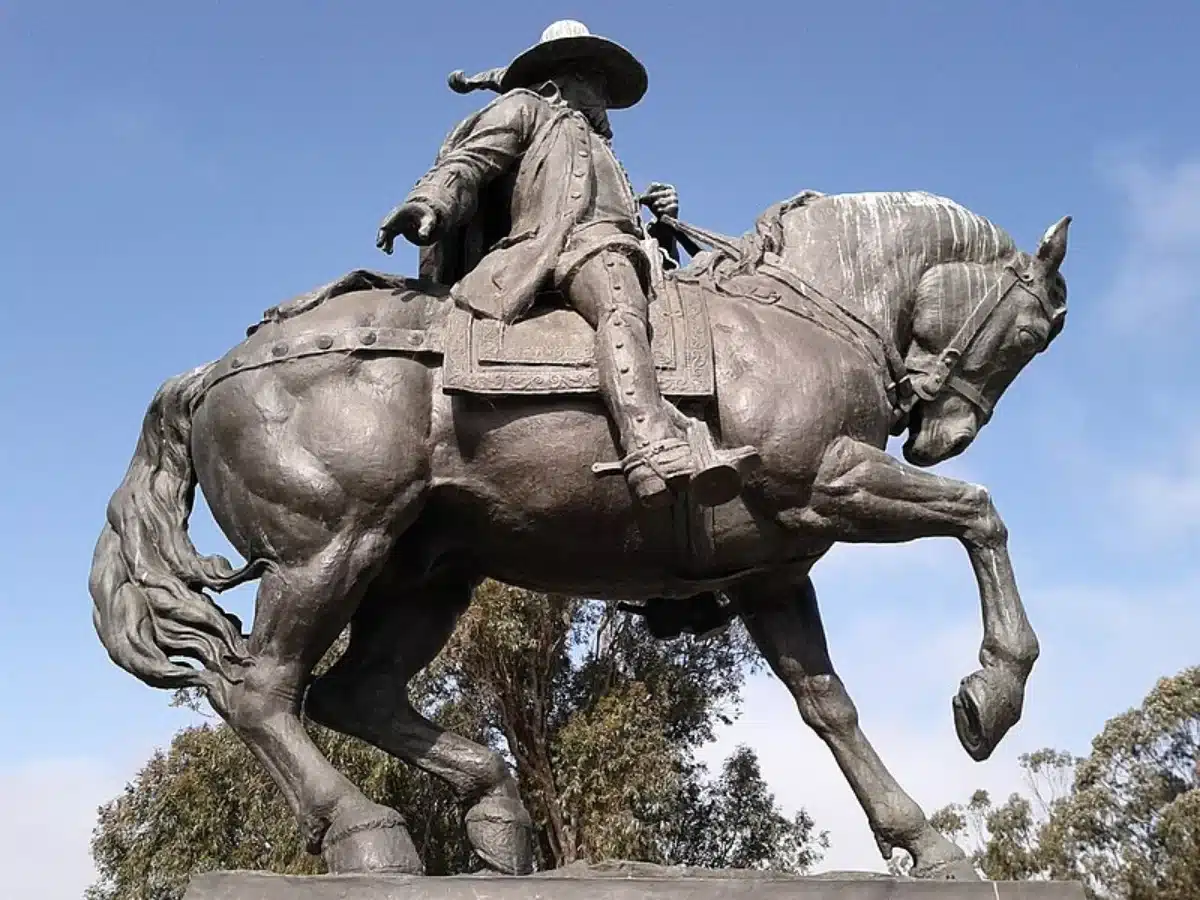Cuerno Verde:
Spain’s Don Juan de Oñate founded New Mexico on behalf of his home country in 1598. This new frontier expanded for hundreds, if not thousands of miles in the minds of the Spanish.
This mentality led to decades of battles between the Spaniards and the native people, including the Navajos and the Comanches who came down from Colorado.
In late October 1768, 500 Comanches attacked Ojo Caliente before dawn, attempting to wipe out the Spaniards. But Spanish firearms killed their charismatic leader, “Cuerno Verde,” the Spanish name given to the wearer of the chief headdress.
Comanche beliefs bound Cuerno Verde’s family to avenge his death. The chief’s son took his father’s name and his distinctive leather headdress with green-tinted buffalo horns and dedicated himself to killing all the Spaniards.
Juan Bautista de Anza:
Juan Bautista de Anza grew up on the Sonoran frontier in a family of proud Basques and suffered a great loss when his grandfather and father were killed by Apaches.
By the time de Anza was 25, he was in command of the Presidio at Tubac, south of Tucson, Arizona.
In 1774, he blazed a trail from Sonora to San Gabriel Mission in Alta California, near today’s Los Angeles.
From 1775 to 19776, he led 240 settlers north to Monterrey, the stepping stone to the settlement of San Francisco Bay.
Cuerno Verde vs. Juan Bautista de Anza:
In 1777, Teodoro del Croix, Commander General of the Internal Provinces, appointed Juan Bautista de Anza Governor of New Mexico in hopes he could do something about the Comanche problem.
Upon his arrival in New Mexico, Juan Bautista de Anza quickly determined that previous forays against the Comanche all failed for the same reason: the Spaniards always took the same route east over the Sangre de Cristo’s and then north over the Ratons. The Comanches saw them coming and just retreated to wait for a better day. Juan Bautista de Anza determined to use a completely different route to the plains of Colorado to sneak up on the Comanches.
Juan Bautista de Anza’s scouts reported an encampment of Comanches on the plains near today’s Wigwam, Colorado (south of Colorado Springs), and Juan Bautista de Anza led a successful attack.
However, Cuerno Verde and his warriors were absent on a raid against Taos. So, Juan Bautista de Anza and his men hurried south along an ancient trail later known as the Trapper’s Trail to the area we know now as Pueblo. From there, they headed down the flank of the Wet Mountains (Sierra Mojada) heading for Sangre de Cristo Pass.
Somewhere just east of Greenhorn Mountain, the Spaniards met up with Cuerno Verde’s raiders returning from their unsuccessful raid on Taos. The two groups skirmished, separated, and regrouped. The next day, the Comanches came up very close against the Spaniards and fired their muskets. The Spaniards identified Cuerno Verde by his headdress and trapped him and his closest warriors in a gully.
Cuerno Verde dismounted and, from behind his fallen horse, made his final defiance against the Spaniards. A hail of lead balls claimed Cuerno Verde’s life and those of his followers.
When it was all over, the Spaniards scoured the field for useful items and Juan Bautista de Anza claimed the distinctive headdress as proof of his endeavors. He forwarded the headdress to Teodoro de Croix, who, rumor has it, forwarded it to his superiors, who forwarded it all the way to the Vatican.
Juan Bautista de Anza finally made a lasting Spanish-Comanche peace in 1787, which cleared the way for the Arapaho and the Cheyenne to move onto the plains and trade peacefully with the Spanish Comancheros and Ciboleros riding out of Santa Fe and Taos.

